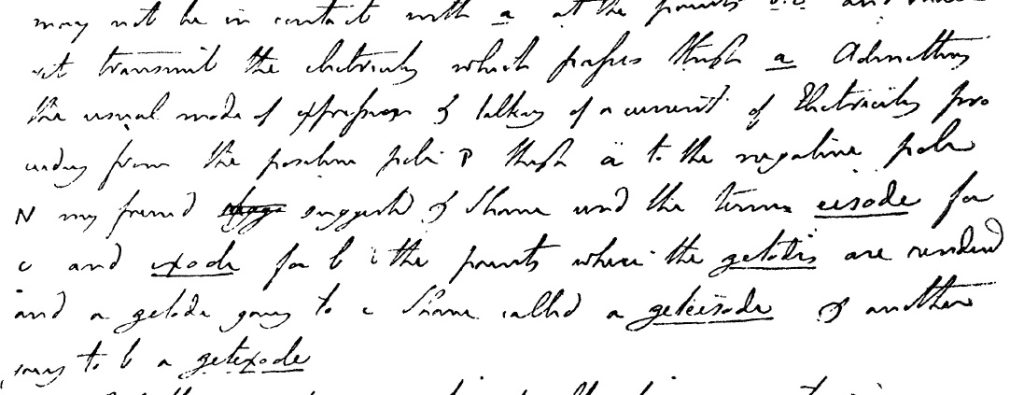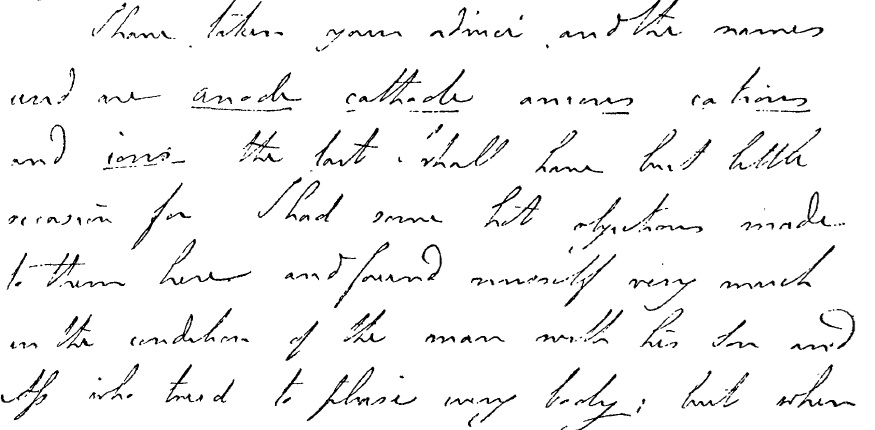

We consider the history of science to be part of the dynamic development of any research, and we believe that the knowledge of historical context is crucial for research progress. The most reliable way to acquire this knowledge is by reading important original texts of the past, instead of resorting to digests. In this project, we seek to present the original texts and introduce some of the people who fostered the development of electrochemistry. We also include some secondary materials that complement knowledge beyond the original texts, but they are not meant to substitute the originals.
Our reading of the old texts can be sometimes complicated by terminological problems, outdated units, and even by our lack of knowledge of Latin or Greek. For example, do you know the words eisode, exode, zeteisode, and zetexode? Read the 1937 study “The Faraday-Whewell Correspondence Concerning Electro-Chemical Terms” to learn that these terms were initially proposed by Faraday (his letter at the left, April 24, 1834) for what we know now as anode, cathode, anion, and cation (his letter at the right, May 15, 1834)? It was William Whewell (1794-1866), a colleague unrelated to electrochemistry, who convinced Faraday to use the currently known terms in their correspondence:


We shall do our best to make your reading of the old text easier than deciphering this Faraday’s hand-writing. First of all, we upload here important sources, including those that were hitherto not available in the digital form. Additionally, we provide comments on the terminology and other issues that may be less usual for modern electrochemical language. Further comments highlight the links between various old articles and emphasize the research continuity.